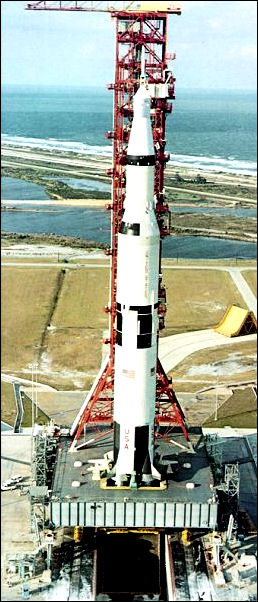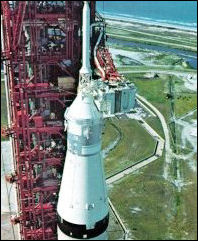
| Getting set for the flames of an Apollo launch. The thrust chambers of the first stage's five engines extend into the 45-foot-square hole in the Mobile Launcher platform. Until liftoff, the flames will impinge downward onto a flame deflector that diverts the blast lengthwise in the flame trench. Here, a flame deflector coated with a black ceramic is in place below the opening, while a yellow (uncoated) spare deflector rests on its track in the background. It takes a tremendous flow of water (28,000 gollons per minute) to cool the flame deflector and trench. The pumps, which start 8 seconds before ignition, can deliver that flow for 30 seconds, and then a reduced flow for an indefinite period. Another 17,000 gpm of water curtains the Mobile Launcher tower from the rising flames. |



